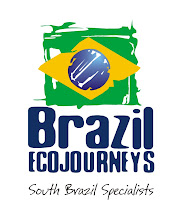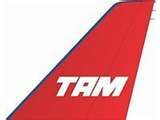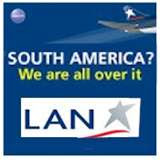By Roy Heale
Could it possibly be the Garden of Eden? You don’t have
to be an expert horticulturist or even an avid gardener to
enjoy the vibrant colours of the unique flora and fauna that
envelop the countryside and urban gardens in Costa Rica.
Anyone who enjoys untouched forests and the scents and
sights of beautiful flowers—and what gay person doesn’t?—
will agree that Costa Rica is the garden of Central America.
It’s a small country with just over fifty thousand square
kilometers—approximately two thirds the size of New
Brunswick—with a population of about 4.5 million “Ticos”
as Costa Ricans are affectionately nick-named (derived from
their affinity for ending words with the Spanish suffix “tico”
or “tica” meaning ‘little’).One learns very quickly about the
Tico’s great pride concerning their environmental preservation
and conservation. As you travel around this country
you will appreciate the untouched tropical rain forests,
beautiful natural sandy beaches, earthy landscape and
villages that are being kept unspoiled for the Costa Rican
citizens and for the enjoyment of eco-tourists and outdoor
enthusiasts.
With the Caribbean Sea to the east and the Pacific Ocean
to the west, a mountainous interior with approximately 280
volcanoes—seven of which are currently active—Costa
Rica offers a veritable feast of outdoor activities in spectacular
surroundings.The rainforests with their misty waterfalls
and pristine lagoons are abundant with indigenous wildlife
including humming birds, parrots, toucans, and other exotic
birds, monkeys, butterflies and more. From wind-surfing, sea
kayaking, parasailing, and surf boarding on the oceans, to
horse back trail rides, white water rafting and the renowned
tree-top canopy tours or back-packing through the forests,
enjoying the volcanic hot springs, and simply relaxing on the
sun drenched beaches—Costa Rica offers an adventure
with nature. No wonder the venturesome gay tourist is
discovering this tropical paradise and enjoying the gay
coastal resorts and smaller urban gay hotels.
Arriving in Costa Rica you will probably land at the San
José International Airport after a fairly lengthy journey.
Although everything is close to this central capital city, the
roads are not speedy highways and the other smaller
airports in the outlying districts are served with intermittent
flight schedules. So it is very practical to make a short
stopover in San José for a more comfortable journey to
your holiday resort, hotel or mountain lodge and again at
the end of your vacation. The city has much to offer in local
markets for shopping, historic buildings like the National
Theatre and National Museum or Government Buildings,
pedestrian shopping streets, gay nightlife, restaurants, sightseeing,
local culture and more.
Although Costa Rica passed legislation in 1999 making
discrimination against sexual and other minorities illegal, the
Ticos are very religious, thus the gay culture is tolerated
with a policy rather like the United States Military “Don’t
Ask-Don’t Tell” and overtly public gay acts are frowned
upon. The legal age of consent is eighteen and homosexual
acts are legal but walking down the street holding your
partner’s hand might cause some raised eyebrows and
would be better kept for inside a gay establishment of which
there are many throughout Costa Rica. Having said that, you
will find the Ticos to be very gay-friendly.
Driving to the Pacific Coast from San José is about a four
to five hour journey allowing for relaxing stops along the
way, or time to observe the crocodiles along the banks of
the Rio Tarcoles near the Carara Wildlife Refuge, or
watching the surfers at the Playo Jaco where international
surfing competitions are held and lunch at one of the attractive
small-town restaurants along the route. The roads are
narrow, winding and go from sea to sky in a very short
distance making for a memorable and sometimes hair-raising
journey with great photo opportunities at every turn
in the road. The Playa Hermosa—Beautiful Beach—is one of
the longest white sand beaches you will probably ever see
and is also very popular amongst the surfer crowd at
certain times of the year when the waves are cresting
perfectly.
The small Pacific coastal towns of Quepos and Manuel
Antonio have become the largest gay haven in Costa Rica
with several gay resort complexes, bars and cafes. The main
beach at Manuel Antonio is extremely long, with coral-white
sand, a gentle crystal-blue ocean, and rocky islands just a
short distance from shore and at the entrance to the
Manuel Antonio National Park. Skirting the beach is a wide
variety of cafes, shops and restaurants for your daytime
pleasure and every kind of beach activity is available—with
equipment rentals. A hike in the national park will bring rich
rewards for bird watchers, wildlife observers or those
seeking an undeveloped more private beach experience.
Nearby is La Playita—Little Beach—that has attracted a
large gay population since the 1970’s but recently a condominium
development along the shoreline has made this
beach more public. However, the local gay community and
gay visitors have staked a claim and the majority of beachgoers
are still gay, but the illegal practice of nude sunbathing
has been subdued by local police patrols. The gay beach aura
still exists and can be enjoyed after a short walk along the
rocks from the main beach. All beaches in Costa Rica are
public domain by law and no one can claim a beach as totally
private even if they own the land adjacent to the beach so
the rainbow flag will continue to fly as long as the community
shows up.
In the village of Manuel Antonio are several gay resorts.
The town is situated high up on the cliffs overlooking the
ocean bay and National Park, with spectacular views—
especially for those romantic sunsets. The Casa Blanca
Hotel is a reasonably priced gay-owned and operated
resort with lush tropical gardens, two swimming pools,
sundeck, self-service poolside bar and much more. They
offer discounts for stays of one week or longer and breakfast
can be added for a nominal seven dollars per day. The
rooms are large and comfortable with free local phone
service and air conditioning—not a standard hotel feature in Costa Rica. This is the perfect get-away for a quiet or romantic vacation with plenty of gay amenities and sports nearby. The best place to watch the sunset and then dine under the stars is the nearby gay-friendly Barba
Roja Restaurant where the views are spectacular and the food is equal in delight
to the sunset.
When there are so many volcanoes to see in one country it’s important to
select the one most likely to put on a show. If you are looking for a little
“volcanic” excitement in Costa Rica the choice would be Aranel volcano,
renowned as the most active in the Americas.You might even feel the ground
tremble and see the night sky explode with ash and lava in a natural fireworks

display. Or you might just get to enjoy the volcano’s hot springs at Bali Hot Springs Hotel, Resort and Spa. Either way it will be another memorable experience in this amazing vacation playground of biodiversity. Here you can also stay
overnight or for a few days—from only sixty dollars per night—at the new gay Palo Verde Resort with ten awesome cabins, lagoon swimming pool with wet bar and cascading waterfalls, jacuzzi, party center and an amazing view of the volcano.
Whether you’re a nature lover or adventure junkie, the treetop canopy tours are a must-do activity during your stay. Canopy in this instance refers to the sky and a canopy tour of the forests is one of the most well known attractions of
Costa Rica. See the forest as the monkeys do—high above the tree line— swinging from the treetops on a zip-line, from platform to platform, for a once in- a-lifetime experience!
More sedate activities include plantation tours featuring coffee, banana, sugar
cane, papaya, yucca, avocado or giant African Palm plants or jungle tours visiting
waterfalls and lagoons. Expediciones Nationales offers a wide range of tours throughout Costa Rica ranging from four-hour trips to day tours or overnight adventures plus weekend trips to Nicaragua.They can even customize a tour to travel at your own pace. In a country with so much variety and adventure to offer it is beneficial to consult with a gay travel expert before you leave home. A local gay travel agency can ensure you savor all that gay Costa Rica has to offer and the gay staff at Tiquicia Travel located in the heart of old San José are the perfect specialists to assist with your vacation planning. The owner, Yerick, speaks English, French and of course Spanish to assist with you all your travel plans from airport transfers, country-wide accommodations, specialty tours, tour guides or excursions and they even have their own hotel above their offices for a convenient lowcost stay in San José. They can provide expert local advice and ensure that your vacation is a positive gay experience in this tropical paradise.
Before heading home, on your last night in San José you might want to enjoy
dinner in the tropical gardens at The Gardens Restaurant in the historic old town
Barrio Aman.They specialise in fresh seafood and local steaks in a Rancho-style
bar and grill.You may not believe you’re on this earth during this one last chance
to enjoy the Garden of Eden à la Costa Rica before returning to your routine
lifestyle.
This is the vacation where you will definitely have time to stop and smell the
flowers! A paradise where 852 species of birds and thousands of varieties of
orchids live in harmony together and the locals are determined to keep it that
way for generations to come.
The Ticos have a widely used expression—“Pura Vida”—which, loosely translated
means “everything’s good”. On your vacation to this paradise, you will soon
discover how this phrase evolved into the Costa Rican vernacular.

 atur Campeche. This resort is located on one of the most popular surfing beaches on the island.
atur Campeche. This resort is located on one of the most popular surfing beaches on the island. brought in from the ocean, shucked, cooked and served.
brought in from the ocean, shucked, cooked and served.
























